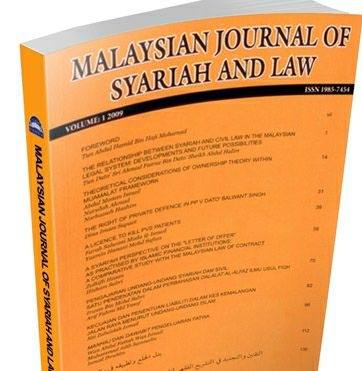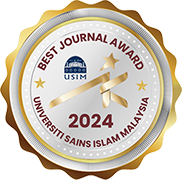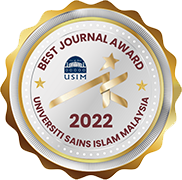THE LEGAL FRAMEWORK ON REBELLION AND INSURGENCY IN ISLAMIC LAW AND CUSTOMARY INTERNATIONAL LAW: A REVIEW
DOI:
https://doi.org/10.33102/mjsl.vol6no2.140Keywords:
Rebellion, Insurgency, Islamic law, Customary international law.Abstract
Over the years, Muslim countries have been faced with wave of violence mostly related to insurgency or rebellion, leading to loss of lives and property on an unprecedented scale. Interestingly, rebellion and insurgency have a long, controversial, and deeply rooted history in Islam. As such, it is one of the most thoroughly studied and regulated concepts in Islamic law. Other non-Muslim societies too, have faced these kinds of challenges at different stages of their development, underlining the literature on rebellion and insurgency in customary international law. Therefore, from Muslim to non-Muslim states, this challenge is not a new one: there clearly is no shortage of legal regulation from either side. Notwithstanding, the menace of insurgency related violence seems to have defied all attempts at regulation. This paper compares the regulation of insurgency and rebellion under Islamic law and customary international law with a view to identifying the similarities or otherwise. It thereby relates the trends in rebellion and insurgency in both Muslim and non-Muslim countries to the legal regime in both systems. The paper finds that the legal regime regulating rebellion and insurgency in Islamic law and customary international law are similar, with trivial variances in substance. This being the case, it raises the question if the legal regulation of these issues has had any effect on the unending violence that has so far destroyed several states and led to loss of millions of lives. The paper concludes that notwithstanding the seeming laxity of the legal regimes regulating insurgency and rebellion in both Islamic law and customary international law, the genesis of the problem might have been with application rather than the substance of the law.
Downloads
References
Al-Kalbee, I. J. (Nd). Al-Qawanin al-Fiqhiyyah. Beirut: Maktabah Usamah b. Zayd.
Al-Karmee, M. Y. (ND). Ghaayat Al-muntahaa . Beirut: Al-Maktab Al-Islami.
Al-Shirbeenee, M. K. (1415 AH). Al-Iqnaa Fee hill alfaaz Abee Shujaa. Beirut: Dar al-fikr.
BBC NEWS . (9 April, 2012). Guide: Syria Crisis. Retrieved 22 3, 2018, from BBC: http://www.bbc.com/news/world-middle-east-13855203
BBC NEWS. (24 November, 2016). Who Are the Farc? Retrieved 11 June, 2018, from BBC: http://www.bbc.com/news/world-latin-america-36605769
Cassese, A. (2005). International Law (second ed.). Oxford: Oxford University Press.
Cassese, A. (2005). International Law (2 ed.). Oxford: Oxford University Press.
Clapham, A. (12 June, 2010). The Rights and Responsibilities of Armed Non-State Actors: The Legal Landscape & Issues Surrounding Engagement. doi:10.2139/ssrn.1569636
Crowford, J. (2008). Brownlie’s Principles of Public International Law (Eight ed.). Oxford: Oxford University Press.
Deeks, A. S. (2012). Unwilling or Unable’: Toward a Normative Framework for Extraterritorial Self-Defense. Virginia Journal of International Law, 52(3), 483-550.
Fadl, K. A. (2001). Rebellion and Violence in Islamic Law. New York: Cambridge University Press.
Hamid, A. G. (2011). Public International Law: A Practical Approach (3 ed.). Selangor, Malaysia: Sweet & Maxwell Asia.
Hanifi, M. J. (2009). Causes and Consequences of the Destabilization of Afghanistan. In Viewpoints, Afghanistan, 1979-2009: In the Grip of Conflict. Washington, DC: The Middle East Institute.
Humam, I. (1999). Fath al-Qadir. Beirut: Dâr al-Kitab al-Ilmiyah.
Ibn Hajar Al-askalanee, A. b. (1993). Fath. al-B¯ar¯ı bi Sharh Sah.¯ıh. al-Bukh¯ar¯ı. Beirut: D¯ar al-Fikr.
ICRC. (2010). What Is the Impact of the Colombian Armed Conflict on the Population? Geneva: International Committee of the Red Cross. Retrieved 31 May, 2018, from https://www.icrc.org/eng/resources/documents/report/colombia-report-intro-220410.htm
Kathy, G. (18 November, 2015). A Brief Guide to the Syrian Civil War. Retrieved 17 June, 2018, from The Atlantic: http://www.theatlantic.com/international/archive/2015/10/syrian-civil-war-guide-isis/410746/.
Lubell, N. (2010). Extra Territorial Use of Force Against Non-State Actors. Oxford: Oxford University Press.
Maley, W. (2010). Afghanistan: An Historical and Geographical Appraisal. International Review of the Red Cross, 92(880), 859-876.
Muhammad, I. A. (1386 AH). Radd Al Muhtaar Alaa al-Durr Al Mukhtar alaa Tanweer Al Absaar. Beirut: Dar Al-Fikr.
Nijman, J. E. (2010). Non-State Actors and the International Rule of Law: Revisiting the 'Realist Theory' of International Legal Personality. In M. a. Noortmann, Non-State Actor Dynamics in International Law: From Law-Takers to Law-Makers (pp. 91-124). Farnham, United Kingdom: Ashgate Publishing Limited.
Olsen, M. G. (2014). The ISIL Threat. Remarks by Mathew G Olsen, Director, National Counterterrorism Center. Washington, D.C., Washington, D.C., USA: The Brookings Institution. Retrieved 16 May, 2018, from https://www.dni.gov/files/documents/2014-09-03 Remarks for the Brookings Institution.pdf
Ouda, A. Q. (2005). Criminal Law of Islam. New Delhi: Kitab Bhavan publishers.
Priya Gajraj, S. S. (2005). Conflict in Somalia: Drivers and Dynamics (English). Washington, D.C: World Bank. Retrieved 5 June, 2018, from http://documents.worldbank.org/curated/en/537531468335694025/Conflict-in-Somalia-drivers-and-dynamics
Qadri, M. T.-u. (2010). Fatwa on Terrorism and Suicide Bombings. London: Minhaj-ul Qur'an International.
Qud¯ama, I. (ND). al-Mughn¯ı. Beirut: D¯ar al-Kutub al-Ilmiyya.
Seth G Jones, A. M. (2016). Counter Terrorism and Counter Insurgency in Somalia: Assessing the Campaign against Al-Shabaab. Santa Monica, California: Rand Corporation. Retrieved 24 July, 2018, from www.rand.org/t/RR1539%0ALibrary
Tabassum, S. (2011). Combatants, not Bandits: the Status of Rebels in Islamic Law. International Review of the Red Cross,, 93(881), 121-139.
United Nations High Commission for Refugees. (2017). Regional Refugee Response Plan - Nigeria. Abuja: UNHCR. Retrieved 18 April, 2018, from reporting.unhcr.org/node/16433%0A
USA Refugee Council . (2016). 3 Countries in the World that Produce the Largest Number of Refugees. (Washington, D.C.: US Refugee Council. Retrieved 12 June, 2018, from https://www.google.com/search?source=hp&ei=Yl7xWtKbNontvgSH146QCw&q=refugee+council+USA&oq=refugee+council+USA&gs_l=psy-ab.3.
Vlassenroot, K. T. (2012). Rebels Without Borders in the Rwenzori Borderland? A Biography of the Allied Democratic Forces. Journal of Eastern African Studies, 6(1), 154-176.
Young, R. (2006). Defining Terrorism: The Evolution of Terrorism as a Legal Concept in International Law and Its Influence on Definitions in Domestic Legislation. Boston College International & Comparative Law Review, 29(1), 23-106.
Zegveld, L. (2002). The Accountability of Armed Opposition Groups in International Law. Cambridge: Cambridge University Press.

Downloads
Published
Issue
Section
License
Copyright (c) 2018 Suleiman Usman Santuraki

This work is licensed under a Creative Commons Attribution-NonCommercial 4.0 International License.














































